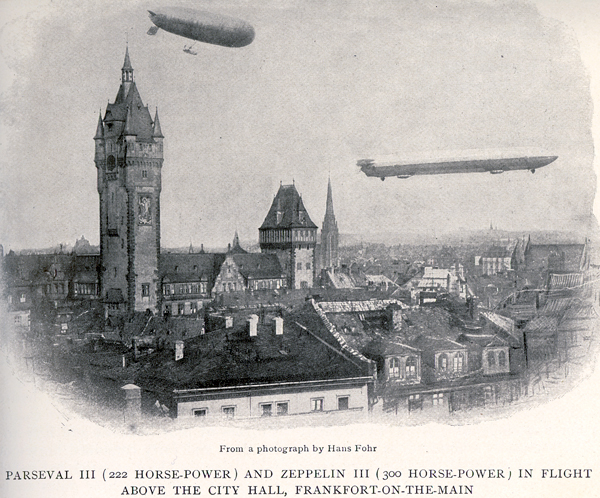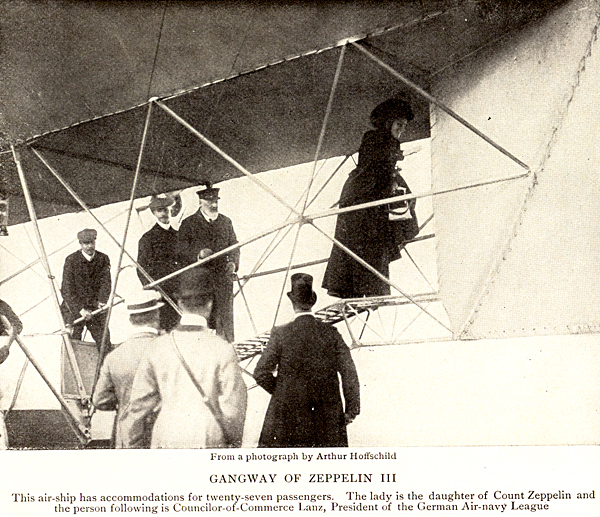Dirigibles in 1910
Today, let's fly the ocean. The University of Houston's College of Engineering presents this series about the machines that make our civilization run, and the people whose ingenuity created them.
It's 1910: airplanes are still wobbly little box kites. None have flown more than 140 miles at fifty miles an hour. Flight is still in its cradle and the May issue of Century magazine describes transatlantic flight -- in airships, not airplanes.
Within a year of this article, Count von Zeppelin would be flying passengers within Europe, and his goal was transatlantic service. We wouldn't see such service for another eighteen years, just after Lindbergh's flight. Still, airships would provide regular transatlantic service long before airplanes would.

One airship did try the crossing only six months after this article, in October, 1910. An American, Walter Wellman, had a non-rigid airship built in France. He left Atlantic City in it, and was east of Nova Scotia when his engines failed.
He and his crew drifted for a day and a half; then managed to hail a passing British mail ship. They lowered their own lifeboat, were picked up, and brought safely back to New York. They used a combination of lantern signals and primitive radio to communicate with the ship. And radio was then even younger than flight.
The Century article reveals how much more methodical than early airplane \ pilots the dirigible builders were. It goes on at length about the care with which dirigible meteorologists were identifying steady air currents -- wind rivers, they called them. They were also mapping the oceanic trade winds in great detail. Radio was already serving weather stations. Now dirigible pilots were set to tie into that new stream of information.

Everything was on course to begin transatlantic service in 1915. Day and a half crossings at seventy miles an hour were within grasp. Then, the guns of August, 1914. Passenger service was put aside. Von Zeppelin's airships were diverted to bombing London. They were terrifying at first. But they soon fell to improved airplane interceptors and tactics. Those great whales in the sky were never meant to serve as warriors.
The postwar turmoil of economic sanctions and depression once more slowed the goal. Count von Zeppelin died in 1917 and Hugo Eckener took over the work. Eckener struggled with all the postwar troubles and finally managed to fly from Friedrichshafen to Lakehurst, New Jersey. Like Lindbergh, he received a ticker-tape parade in Manhattan. His airships went on to log over a million miles in transatlantic service with a perfect service record.
Eckener was enormously popular in Germany. He even tried to run against Hitler in the 1933 presidential election. Of course that doomed him. Hitler made him persona non grata and nationalized the airships. He ran them until the Hindenburg burned at Lakehurst. After that, another war, and no more dirigibles. We had only that brief bright nine-year era, so well foreseen in an old magazine article.
I'm John Lienhard at the University of Houston, where we're interested in the way inventive minds work.
T. R. MacMechen and C. Dienstbach, Over Sea by Air-ship: Surprising Progress of German Plans for a Transatlantic Service. The Century Magazine, Vol. LXXX, No. 1, May, 1910. pp. 113-119. All images from this source.
See also the Wikipedia articles about Count Ferdinand von Zeppelin, America (airship), Hugo Eckener, Airship, and the LZ 127 Graf Zeppelin.
